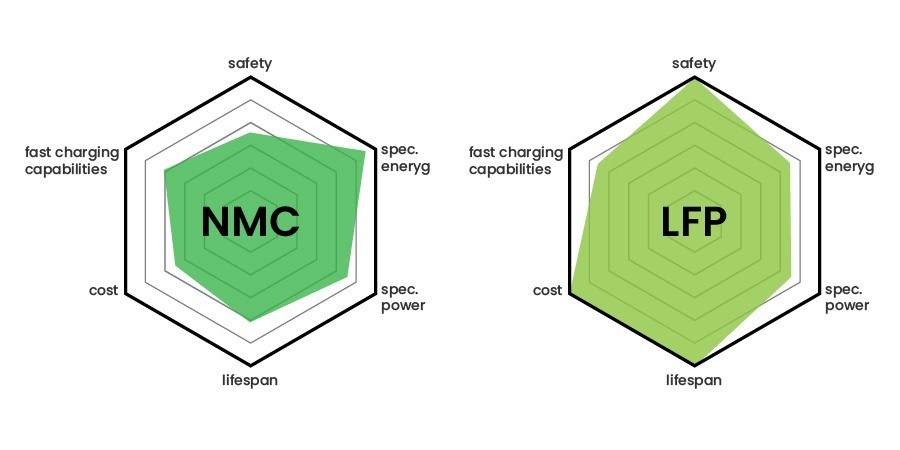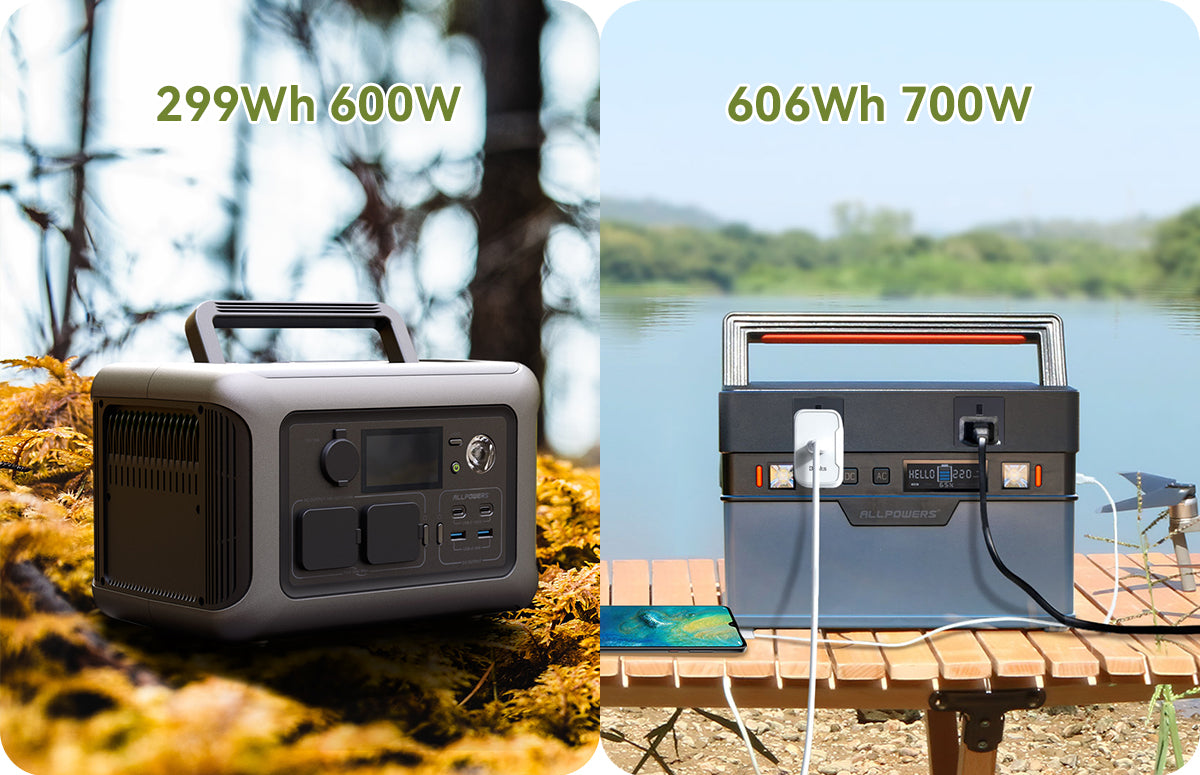When it comes to portable power stations, some people have recently found themselves torn between the ALLPOWERS R600 and S700 models. Let me walk you through a comparison of these two impressive devices.
1. Design

The R600 has the classic, rounded look that you know from ALLPOWERS products. The S700, on the other hand, impresses with a more robust, angular design. Both have practical handles for comfortable carrying - a must for me on outdoor adventures.
In terms of size and weight, the R600 measures approximately 11.2 x 7.6 x 7.5 inches and weighs around 12.8 lbs, whereas the S700 measures approximately 10.4 x 5.5 x 7.1 inches and weighs around 11.9 lbs.
2. Battery capacity and maximum output power
The R600 packs a punch with up to 600W of power (1200W peak power) thanks to its 299Wh lithium iron phosphate (LFP) battery . The S700, on the other hand, houses a larger 606Wh nickel manganese cobalt (NMC) battery and delivers up to 700W (1400W peak power).
Here is a short comparison to better illustrate the capacities:
The R600's 299Wh battery will allow you to charge a 50W camping lamp about 4 times on a camping trip, while the S700's larger 606Wh capacity will allow you to charge the same lamp about 8 times, providing twice the power for extended adventures.
These stations also offer enough power for enthusiastic drone pilots like me. The R600 can charge a 60W drone battery about 3 times, and the S700 with its higher capacity can charge it about 7 times. That means more flight time for breathtaking shots without worrying about power.
| Device | Running time (R600) | Running time (S700) |
| Smartphones (15W) | approx. 14x | approx. 28x |
| Projector (50W) | approx. 4 hours | approx. 8 hours |
| Camping lamp (20W) | approx. 10x | approx. 21x |
| Fan (75W) | approx. 3 hours | approx. 6 hours |
| Speaker (10W) | approx. 21x | approx. 42x |
| Drone (60W) | approx. 3x | approx. 7x |
| Digital camera (18W) | approx. 11x | approx. 23x |
| Laptops (90W) | approx. 2x | approx. 5x |
3. Outputs
| Connection | R600 | S700 |
| AC socket | 2x | 2x |
| USB-C port | 2x | 3x |
| USB-A port | 2x | 1x |
| cigarette lighter | 1x | 1x |
| DC connection | ○ | ● |
| Wireless Charging Pad | ● | ○ |
| LED emergency light | 1x | 2x |
Both models offer 2 AC outputs for charging various devices.
However, there are differences in the USB ports. The R600 has 2 USB-C and 2 USB-A ports, the S700 has 1 USB-C and 3 USB-A ports. The S700 is also equipped with 2 additional DC outputs for older devices. 
It is also worth mentioning that the S700 has 2 integrated LED lights, while the R600 only has one lighting option.
4. Loading speed
| R600 | S700 | |
| AC | 400W Max. | 100W Max. |
| Solar panel | 220W Max. | 100W Max. |
| USB C | - | PD60W |
| automobile | 12V/24V | 12V/24V |
In terms of charging speed, the R600 is the clear winner for me. With a maximum input power of 400W via AC, it reaches full capacity again in just about 1 hour. It also supports charging via 12V/24V car connections and solar modules - the latter takes around 1.5-2 hours to fully charge. The S700, on the other hand, needs around 5-6 hours to fully charge via AC, and the solar charging time is similar.
5. Battery technology

LFP or NMC - Which is the better choice for you?
Finally, let's talk about battery technology. The R600 uses a lithium iron phosphate (LFP) battery , known for its longevity and reliability. The S700, on the other hand, uses a nickel manganese cobalt (NMC) battery with higher energy density, but can age faster over time.
In summary, both models, R600 and S700, have their strengths and weaknesses. The R600 impresses with fast charging times and robust design - ideal for my mobile lifestyle. The S700 offers more battery capacity and additional output options, a solid choice for longer outdoor adventures. Ultimately, it depends on your specific power needs and planned usage.
